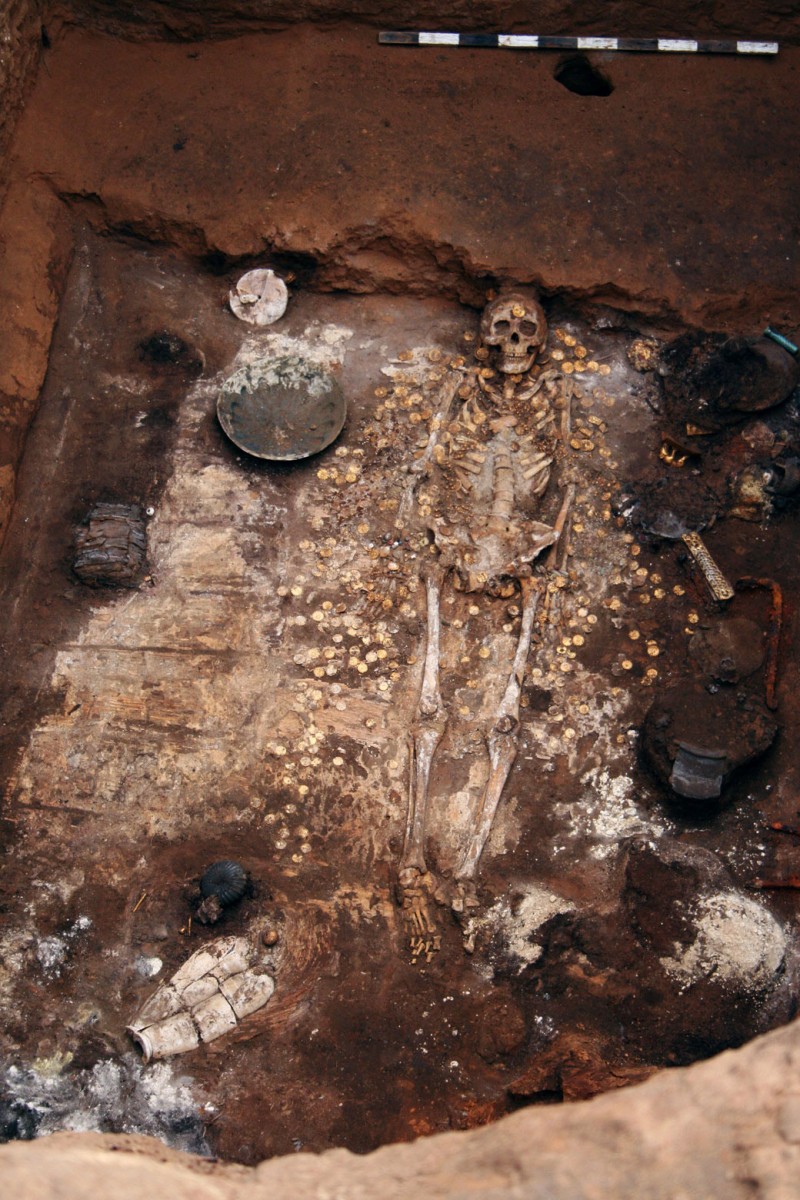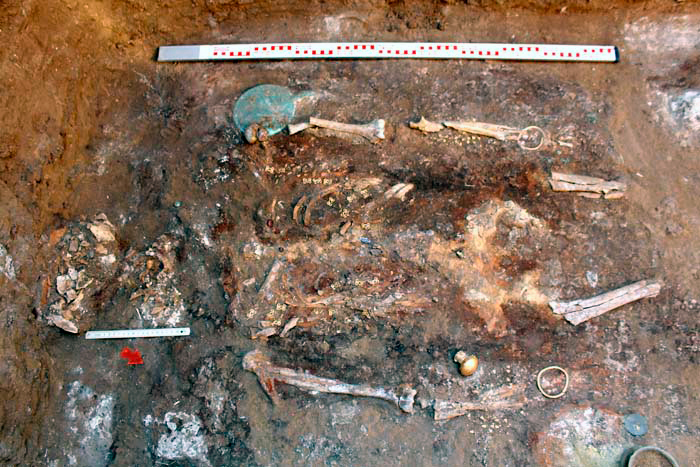Archaeologists have uncovered the tomb of a noble woman from a powerful tribe called the Sarmatians, Iranian people that roamed the Eurasian steppes 2,500 years ago in southern Russia.
While most Sarmatian tombs that have been discovered have already been looted by gravediggers, due to the wealth of golden and bronze artefacts placed inside them, the latest discovery was of an intact burial chamber that had not been robbed.

Within the tomb, archaeologists found a giant bronze kettle, jewellery, a silver mirror, and what appeared to be containers for cosmetics. The woman’s skeleton was also adorned with jewellery and decorations, and her left hand held a silver mirror with an intricately designed golden handle.
“The find is really sensational also because the burial vault was intact – the objects and jewellery in it were found the way they had been placed by the ancient nomads,” said history professor Gulnara Obydennova, who heads the Institute of History and Legal Education in the city of Ufa.
Evolving burial customs offer an insight into the progress of the Sarmatian social structure. Early graves held only the remains of the deceased. The somewhat later inclusion of personal objects with the body followed the emergence of class differences. As society became more complex and affluent, more treasures were included with the corpse, until in the final period burial costumes and even jewellery were added to the ritual.

The burial site was located near the village of Filippovka in the Orenburg region of Russia and was found 4 metres underground in the ‘Tsar Tumulus’, a group of two dozen mounds where hundreds of golden and silver figurines of deer, griffins and camels, vessels and weapons have been found since the 1980s.
The Sarmatians were a group of Persian-speaking tribes that controlled what is now part of southern Russia, Ukraine and Central Asia from around 500 BC until 400 AD. They are particularly well known for their warlike women with single females taking up arms alongside the men. According to ancient Greek historians, such as Hippocrates, the women would not give up their virginity until they had killed at least three enemies in battle. The women were also known to be missing their right breasts, for while they were babies, their mothers cauterized the right breast so that strength and bulk could be diverted to the right shoulder and arm for hunting and fighting. Archaeological materials seem to confirm Sarmatian women’s active role in military operation as they were sometimes buried wearing armour and with weaponry.

The Sarmatians perished when hordes of Huns migrated after AD 370 into southern Russia. Those surviving became assimilated or escaped to the West to fight the Huns and the last of the Goths. The descendants of the Sarmatians include Ossetians, an ethnic group living in the Caucasus region, who speak a language related to Persian.